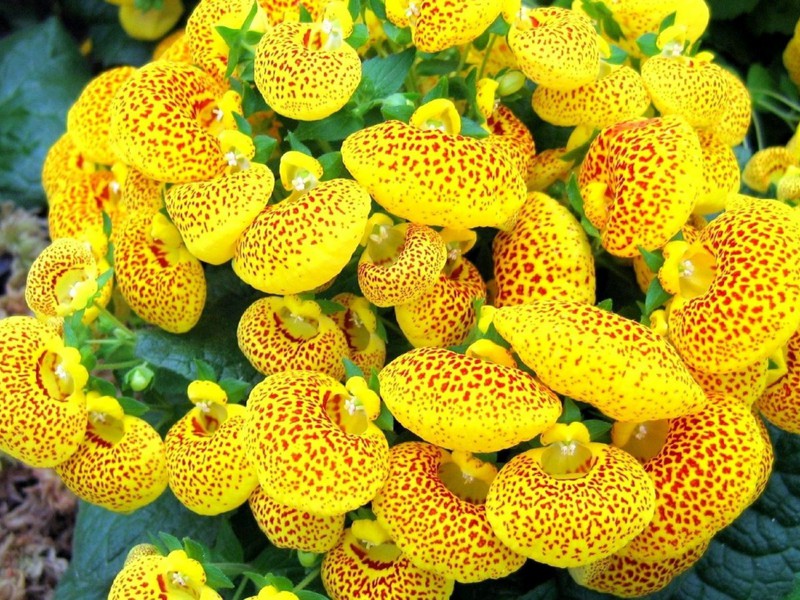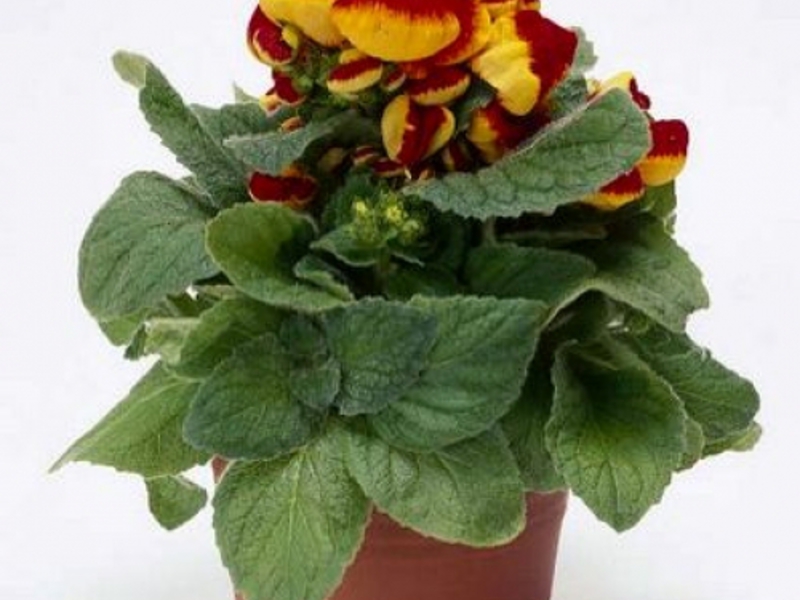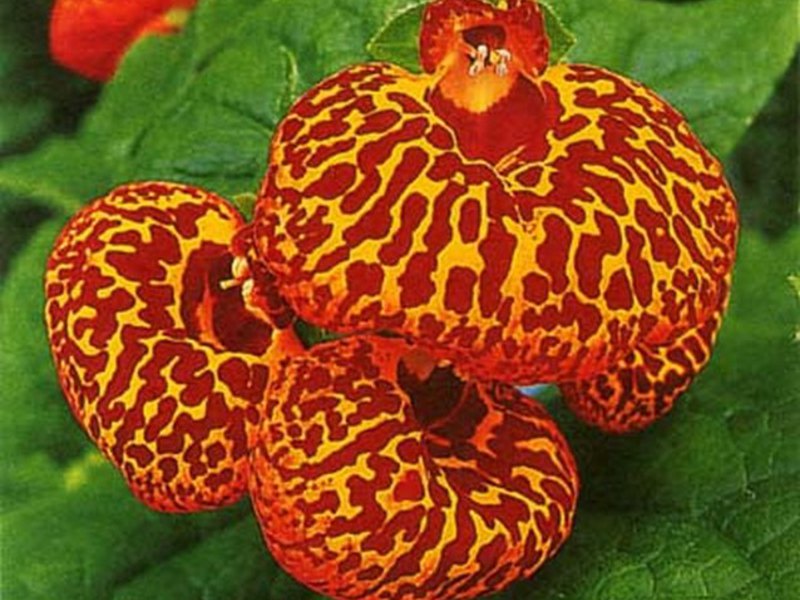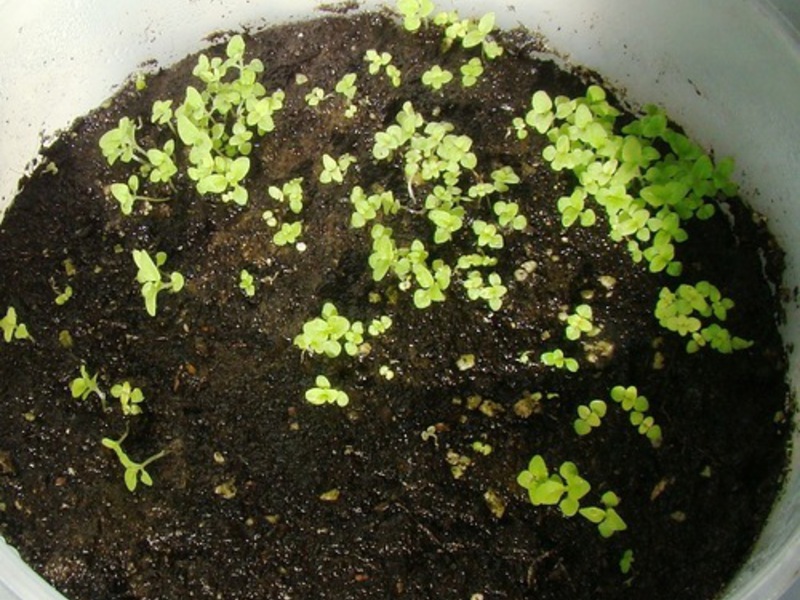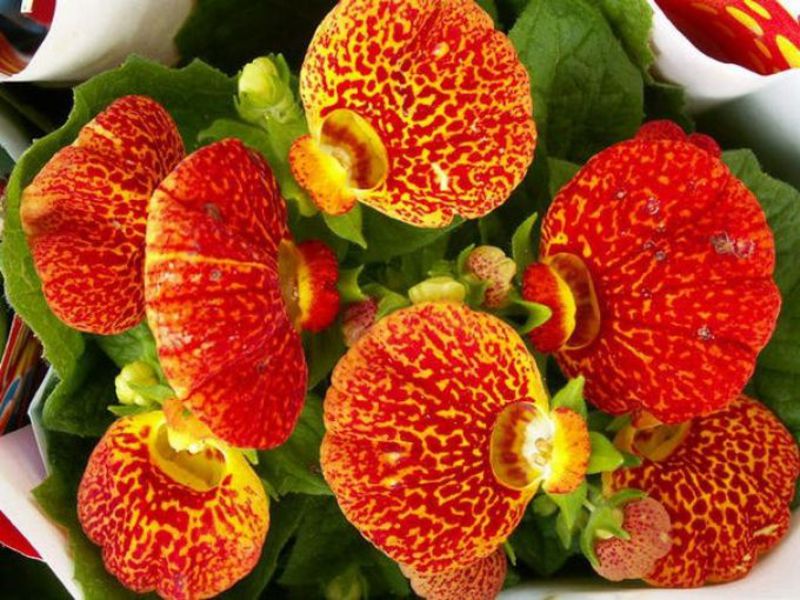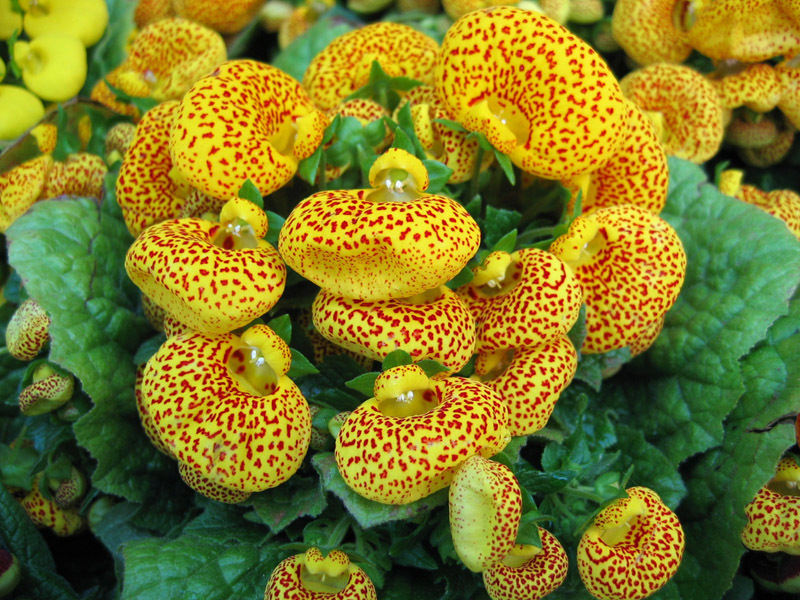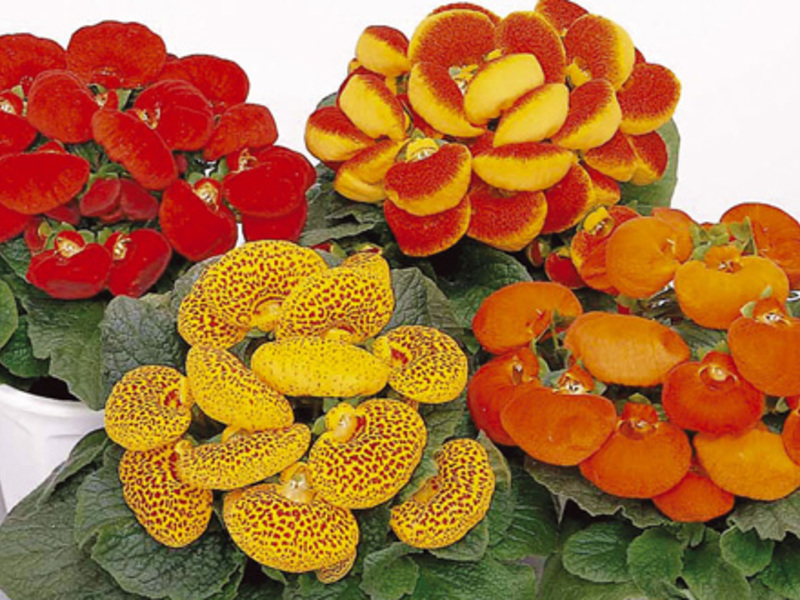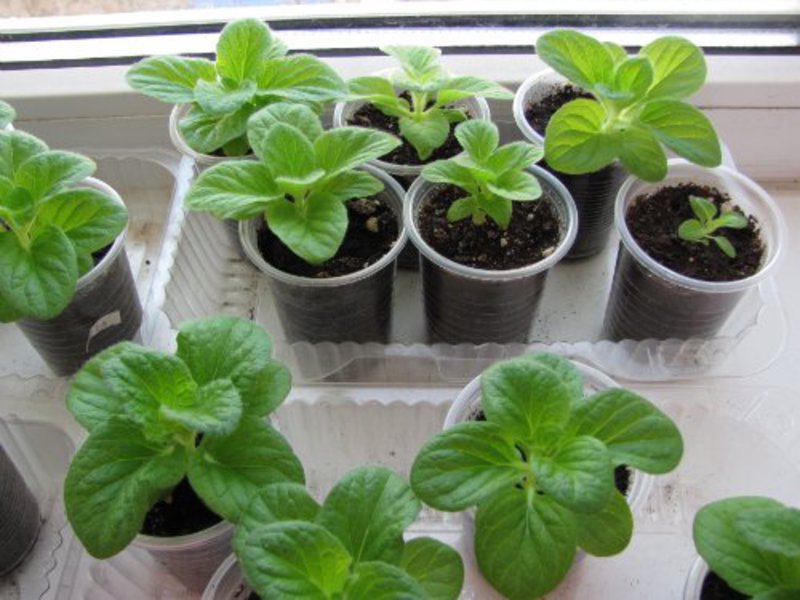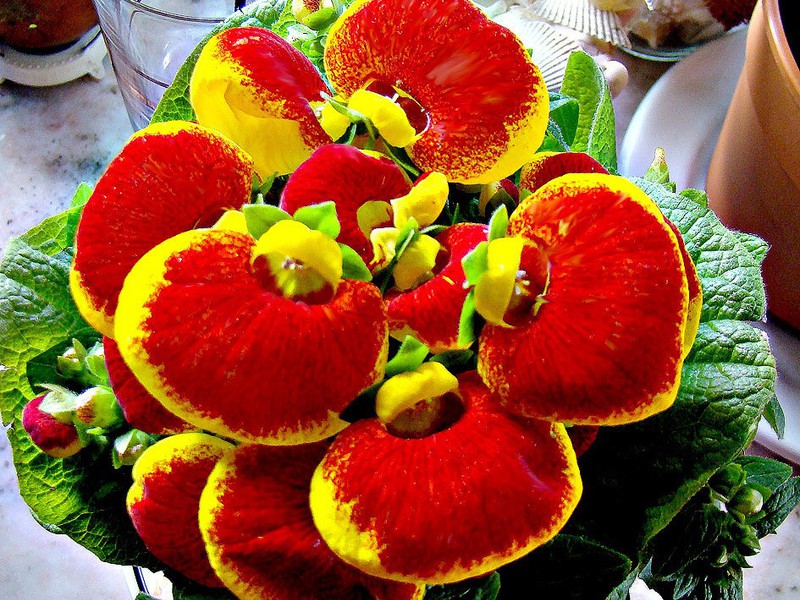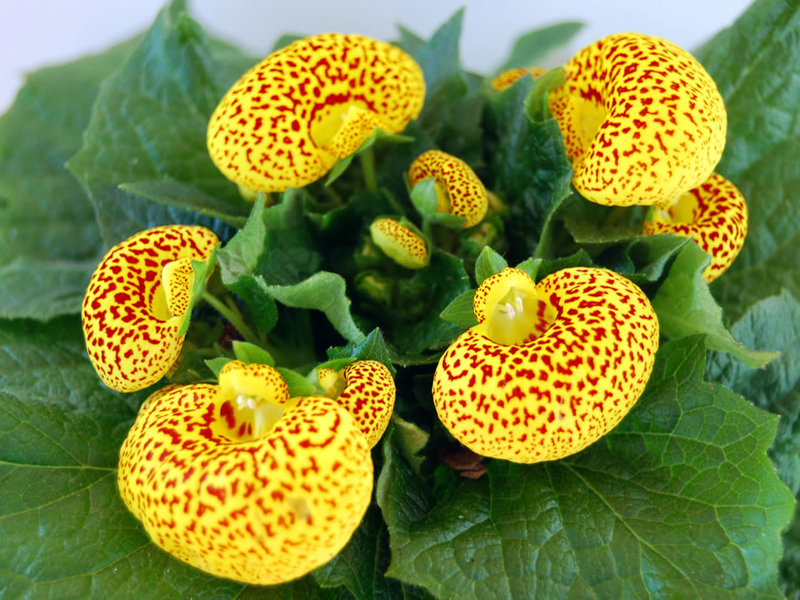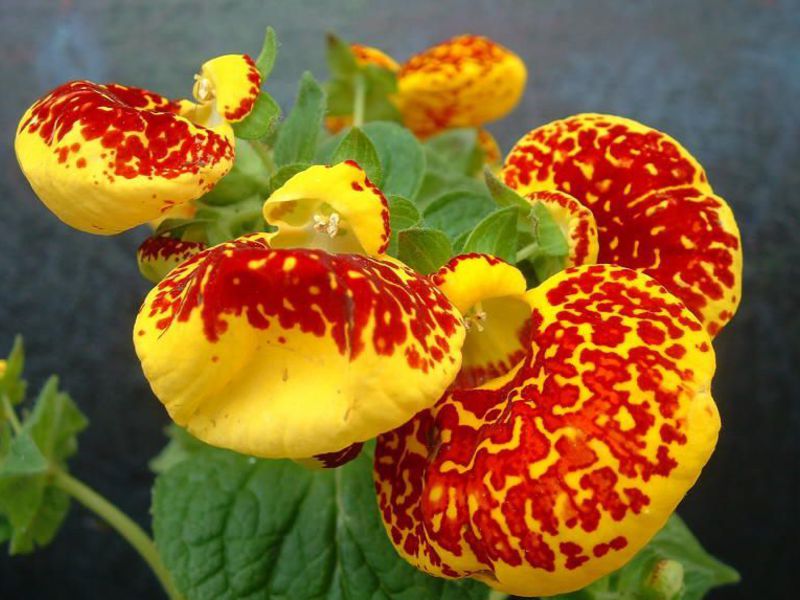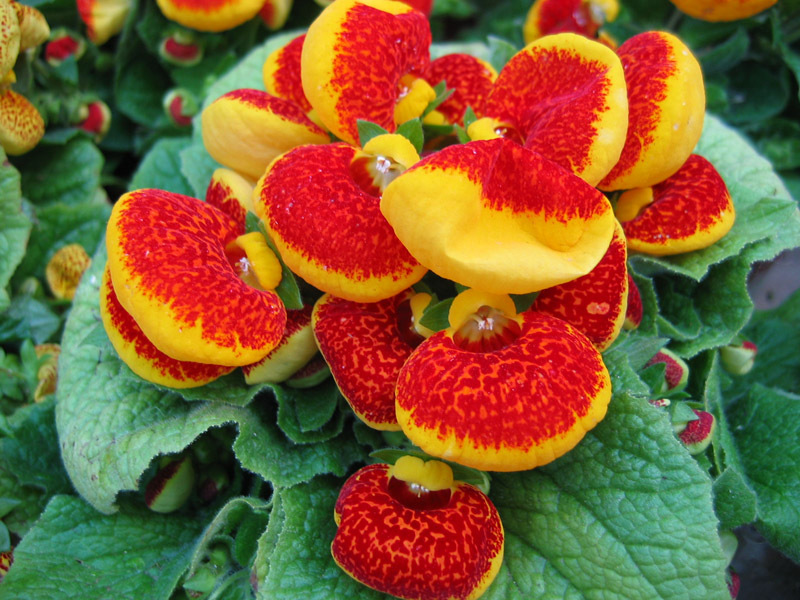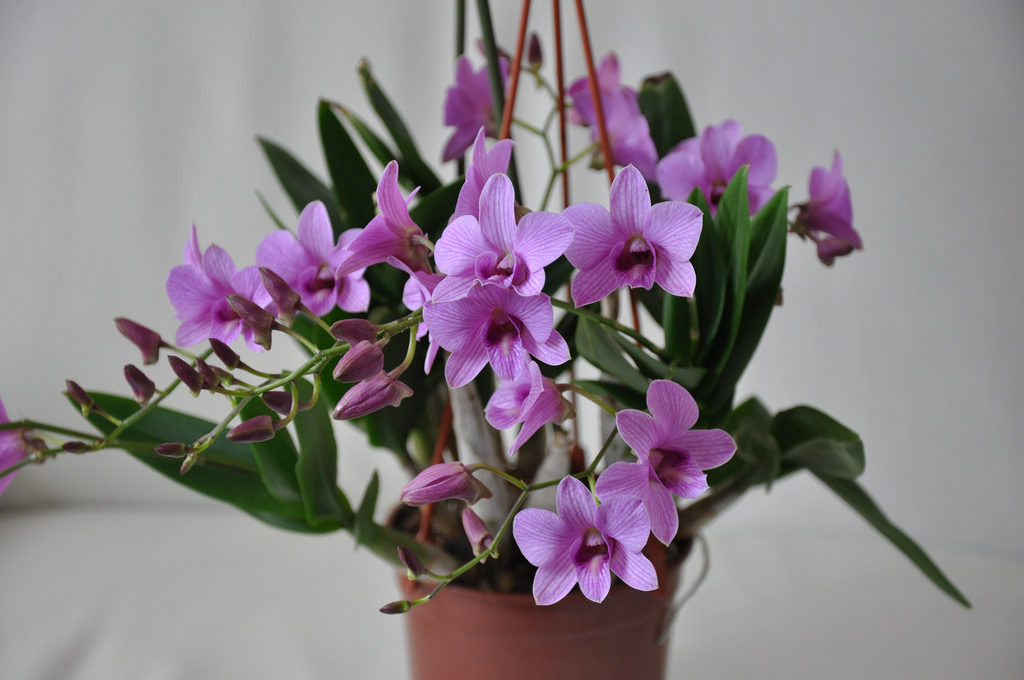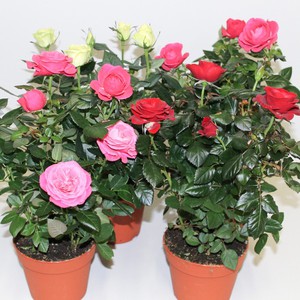Calceolaria is one of the first to bloom in the garden or at home in early spring. This miniature plant is native to Central and South America. Its variegated flowers are shoe-shaped and can be red, white, orange or yellow. Caring for calceolaria is quite simple, so growers are happy to grow a plant at home. An important point in this is the process of flower reproduction, which requires compliance with certain rules.
Content
Description and varieties of calceolaria with a photo
Calceolaria flower belongs to perennial plants. In height and width, calceolaria has equal proportions in 20-30 cm... The bright green, corrugated leaves of the plant reach 5-10 cm in length. Unusual flowers 2.5-6 cm in size consist, as it were, of two lips. One of them is small and almost imperceptible, and the other is large, spherical, inflated. On one plant, up to fifty flowers can bloom at once. Calceolaria blooms for three to five weeks in April or May.
Calceolaria - species
The most popular types of plants are:
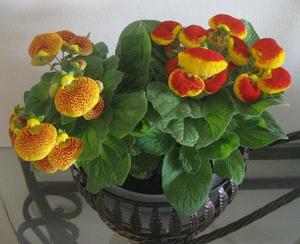 Calceolaria purpurea is a herbaceous perennial that grows up to 50 cm. The plant is covered with basal leaves jagged along the edges. The flowers are distinguished by an oblong lower lip and a reddish-purple color.
Calceolaria purpurea is a herbaceous perennial that grows up to 50 cm. The plant is covered with basal leaves jagged along the edges. The flowers are distinguished by an oblong lower lip and a reddish-purple color.- Calceolaria Mexican can grow from 20-50 cm. It all depends on the growing conditions. It blooms with pale yellow flowers, the diameter of which is about 5 cm.
- Calceolaria wrinkled in height grows to one and a half meters. It has small leaves and small yellow flowers with brown spots. Blooming wrinkled calceolaria looks like a yellow cloud.
- Hybrid calceolaria is a type of plant, under the name of which varieties similar in shape are combined. Basically, they differ only in the color of the flowers. The most common shades are yellow, red and orange. Flowers may have various blots, strokes, streaks, or blotches of a different color. The most popular hybrid is the Dundee variety. This graceful plant blooms beautifully with red flowers.
Caring for calceolaria at home
When growing a plant, the most difficult thing is providing suitable conditions for him... The fact is that the flower does not like dry air and heat. In room conditions, it is almost always hot in summer, and heating devices dry the air in winter. Therefore, when caring for calceolaria, you must follow some rules.
Lighting and growing temperature
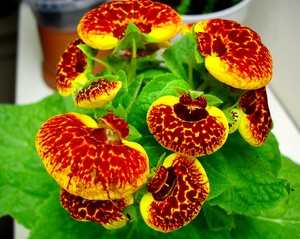 The plant is recommended to be kept in a well-lit place. It must be ensured that it is not exposed to direct sunlight. The flower pot can be placed on northern, western or eastern windowsills.
The plant is recommended to be kept in a well-lit place. It must be ensured that it is not exposed to direct sunlight. The flower pot can be placed on northern, western or eastern windowsills.
The room temperature should be from + 14C to + 16C... At higher temperatures, calceolaria will bloom less, be affected by pests and hurt. In winter, the air temperature in room conditions should be no more than + 12C.
In the summer, the flower can be displayed on a loggia, balcony or veranda. The place should be protected from direct sunlight and wind.
In autumn and winter, the plant needs to be illuminated using fluorescent lamps. In the spring, when calceolaria begins to bloom, it will need a little shading.
Air humidity
The plant loves high humidity. However, in no case should it be sprayed, since water drops can damage the soft edge of the leaves.
To increase the humidity around the flower, it is recommended to place the pot on a pallet. with wet expanded clay, peat or moss... Some growers put pots in planters, filling the space between them with moistened peat.
Watering and feeding
During the dormant period, the plant is watered only as needed, that is, when the soil dries out. As soon as new growth begins to grow, the frequency of watering increases. Especially you need to monitor the moisture content of the soil during the flowering period. Dried topsoil means the plant needs to be watered urgently. After flowering, water the plant less often. Watering calceolaria is necessary with settled water at room temperature.
A young plant transplanted into a pot needs to be fed with complex mineral fertilizers in two weeks. Such dressings are carried out every ten days until the end of flowering.
Calceolaria care after flowering
A flower, even at home, grown as an annual plant... In order for the bush to bloom next year, it must be saved:
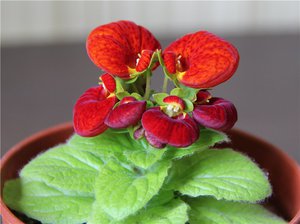 After flowering, the shoots are cut off and the flower is removed to a darkened cool room for one and a half to two months.
After flowering, the shoots are cut off and the flower is removed to a darkened cool room for one and a half to two months.- It is necessary to ensure that the earthen lump does not dry out.
- With the appearance of young shoots, the flower pot is exposed in a well-lit place.
Such a plant will begin to bloom in February or March, that is, two months earlier than grown calceolaria from seeds. The bush will stretch out, and its decorative effect will be lost.
Reproduction of calceolaria
The plant reproduces in two ways:
- seeds;
- by cuttings.
Growing from seeds
The timing of sowing seeds indoors depends on when you want the flower to bloom. For spring flowering, planting should be done in June, and for autumn flowering - in March.
For sowing seeds you need prepare peat soilmixed with sand (7: 1). However, calceolaria does not like sour peat, so it is recommended to add ground chalk to it. About twenty grams of chalk is added to one kilogram of peat. The resulting soil must be well calcined before use.
Calceolaria seeds are very small, so they are simply scattered over the soil surface. You don't need to sprinkle them with anything. It is recommended to put a wet piece of paper on top, moistening it regularly. You need to keep crops in a warm room with a temperature of at least + 18C.
The first seedlings should appear in about two weeks. They should be watered between rows, gently pouring water in a thin stream. As soon as two true leaves appear on the seedlings, they must be dived. In order for the processes to take root well, they can be covered with polyethylene or glass. Every day, the seedlings need to be ventilated, especially after condensation has collected on the glass. Peat should always be moist.
Two months later, the second picking of seedlings is carried out in pots with a diameter of 9-11 cm... Immediately after transplanting, the plant is pinched. Only two or three pairs of leaves should remain on the bush. After a while, young shoots will begin to appear.
Already matured plants are transplanted into flower pots. The soil for this must be heavier and more nutritious. To prepare it, you will need to prepare:
- turf - 2 parts;
- humus - 2 parts;
- peat - 2 parts;
- sand - 1 part.
Calceolaria will bloom, subject to all growing rules, in 8-10 months from the moment of sowing the seeds.
Cuttings
Cuttings cut after flowering you can try to root... The optimal months for grafting are February, March and August. The shoots are dipped in a special rooting powder and planted in a nutritious soil mixture. For the first time, it is recommended to cover them on top with a plastic bag or glass container. In the new place, the cuttings will take root for about two months. To make the calceolaria bush fluffy, several scraps are planted in one pot.
Possible growing difficulties
Calceolaria is picky enough, therefore, in room conditions, especially with improper care, can be affected by pests and diseases.
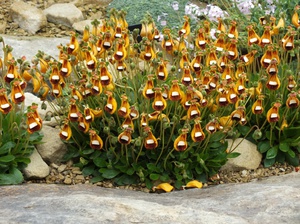 Most often, the plant affects the whitefly and aphids. If there are still few pests, then you can try to collect them manually and destroy them. Otherwise, the bush will need to be treated with special chemicals.
Most often, the plant affects the whitefly and aphids. If there are still few pests, then you can try to collect them manually and destroy them. Otherwise, the bush will need to be treated with special chemicals.- Gray rot is very dangerous for the plant. This disease occurs as a result of prolonged waterlogging of the soil at low air temperatures or excessive concentration of nitrogen in fertilizers. Severely affected areas should be removed immediately, and the plant itself should be sprayed with cuprascat, topaz, oxychom or Bordeaux liquid. Medications for gray mold should contain copper.
Calceolaria reacts to non-observance of growing conditions and rules for the care of yellowing or wilting of foliage, falling off flower ovaries, rapid aging or even death of the bush.
Despite the difficulties of growing calceolaria, its decorative effect and beautiful flowering with unusual flowers makes the flower a welcome guest both on window sills and in personal plots.
